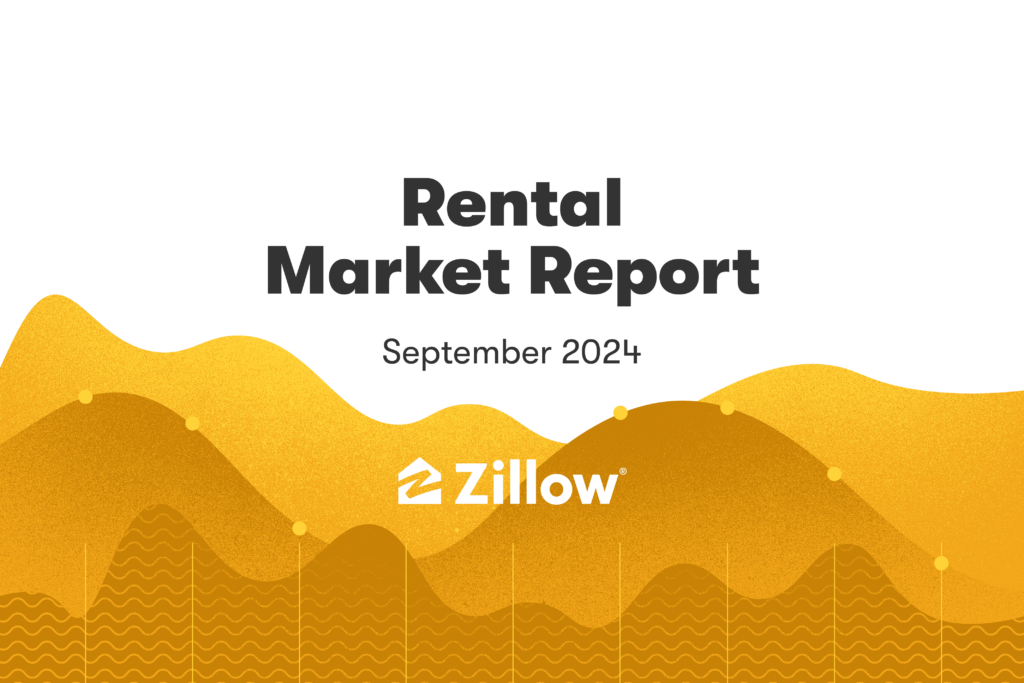As of September 2024, the median U.S. rental household is still spending just about 30% of their income on rent. This is the commonly defined threshold for an affordable rent burden. Past this point, a renter may struggle to afford other necessities in their life. While the income needed to comfortably afford the typical U.S. rent (at or under 30% of income) has increased 17.6% since September 2021 to $81,995, wages have increased at a similar rate, which has caused rental affordability to hold steady at the 30% threshold over the past three years.
But as affordability challenges for renters persist, property managers are taking notice. The share of rental concessions on Zillow — short-term offers like weeks or months of free rent, or waived amenity fees — continues to climb. More than 1 in 3 (35.8%) rental listings now offer a concession — the highest share since February 2021 — as property managers attempt to fill vacancies ahead of the slower fall and winter rental seasons.
Month to month, asking rents remained relatively flat across both single-family and multifamily rentals, in line with typical September seasonality. Rents declined on a monthly basis in 21 major metros, as local markets ease into the fall slowdown. Annually, though, rents remain up in every major market except Austin.
However, rent growth is cooling nationally (3.3%), bringing rental affordability back down to earth in many markets. Only eight major markets have maintained rental affordability levels above 30%: Miami, New York, Los Angeles, Riverside, San Diego, Tampa, Orlando, and Boston.
As we head into cooler months, rents will likely drop on a monthly basis in more metros – and as more newly built apartments open up in markets across the country, annual rent growth will continue to moderate. The recent surge in multifamily construction has brought more homes online, which has eased competitive pressure among renters and helped to slow rent growth dramatically. Additionally, lower mortgage rates may likely pull more renters into the sales market, further easing competition. However, with multifamily construction starts now falling once again, whether this modest reprieve for renters will hold into next year is yet to be told.
Rents
- The typical asking rent is $2,050 in September, up $1 month-over-month. The pre-pandemic average for this time of year is for rents to remain flat.
- Since the beginning of the pandemic, rents have increased by 33.7%.
- Rents are now up 3.3% from last year.
- Rents fell, on a monthly basis, in 21 major metro areas. The largest monthly drops are in Austin (-0.8%), Raleigh (-0.5%), Boston (-0.5%), Richmond (-0.4%), and San Antonio (-0.4%).
- Rents are up from year-ago levels in 49 of the 50 largest metro areas. Annual rent increases are highest in Hartford (7.5%), Cleveland (7.2%), Louisville (6.4%), Richmond (6.1%), and Cincinnati (6%).
Single-Family Rents
- The typical asking rent for single-family homes is $2,245 in September, up 0.1% month-over-month.
- Since the beginning of the pandemic, single-family rents have increased by 40.5%.
- Single-family rents are now up 4.3% from last year.
- Single-family rents fell, on a monthly basis, in 18 major metro areas. The largest monthly drops in single-family rents are in New York (-0.7%), Austin (-0.5%), Boston (-0.5%), San Antonio (-0.4%), and Milwaukee (-0.4%).
- Single-family rents are up from year-ago levels in 49 of the 50 largest metro areas. Annual single-family rent increases are highest in Hartford (8%), Columbus (7.2%), Cleveland (7.1%), Providence (7%), and Indianapolis (7%).
Multifamily Rents
- The typical asking rent for multifamily homes is $1,895 in September, down 0.1% month-over-month.
- Since the beginning of the pandemic, multifamily rents have increased by 27.2%.
- Multifamily rents are now up 2.5% from last year.
- Multifamily rents fell, on a monthly basis, in 30 major metro areas. The largest monthly drops in multifamily rents are in Raleigh (-1.1%), Austin (-0.8%), Richmond (-0.8%), Nashville (-0.8%), and Denver (-0.6%).
- Multifamily rents are up from year-ago levels in 42 of the 50 largest metro areas. Annual multifamily rent increases are highest in Hartford (7.3%), Cleveland (6.5%), Louisville (5.8%), Providence (5.6%), and Virginia Beach (5.3%).
Rent Concessions
- 35.8% of rentals on Zillow offered concessions in September.
- The share of rental listings offering concessions increased by 1.5 percentage points (ppts) month-over-month in September.
- The share of rental listings offering concessions increased by 7ppts from last year.
- The share of rentals with concessions is lower, on a monthly basis, in six major metro areas. The largest monthly drops in the share of rentals with concessions are in Birmingham (-6.2ppts), Providence (-1.2ppts), Philadelphia (-1.1ppts), Indianapolis (-0.4ppts), and New Orleans (-0.4ppts).
- The share of rentals with concessions is higher, on a monthly basis, in 43 major metro areas. The largest monthly increases in the share of rentals with concessions are in San Jose (7.2ppts), Boston (4.9ppts), Milwaukee (4.7ppts), Virginia Beach (4.6ppts), and Kansas City (4.2ppts).
- Rent concessions are up from year-ago levels in 44 of the 50 largest metro areas. The annual increase in share of rental listings with concessions is highest in Raleigh (19.5ppts), San Antonio (14.8ppts), Louisville (13.1ppts), Austin (12.8ppts), and Denver (12.6ppts).
Rent Affordability
- The median household would spend 29.7% of their income on a new rental in September.
- Rent affordability increased by 0.1ppts month-over-month in September. The pre-pandemic share of median household income spent on rent was 28.2%.
- Rent affordability is now 0.1ppts up from last year.
- The most affordable metro areas for rents are Salt Lake City (19.9%), Austin (20.1%), Minneapolis (20.2%), St. Louis (20.5%), and Raleigh (21.0%).
- The least affordable metro areas for rents are Miami (42.5%), New York (40.8%), Los Angeles (37.2%), Riverside (33.6%), and San Diego (33.6%).
- The income needed to comfortably afford the typical U.S. rent — meaning spending no more than 30% of income — increased 3.4% year-over-year in September to $81,995.
- Since pre-pandemic, the income needed to afford rent has increased by 32.1%.

